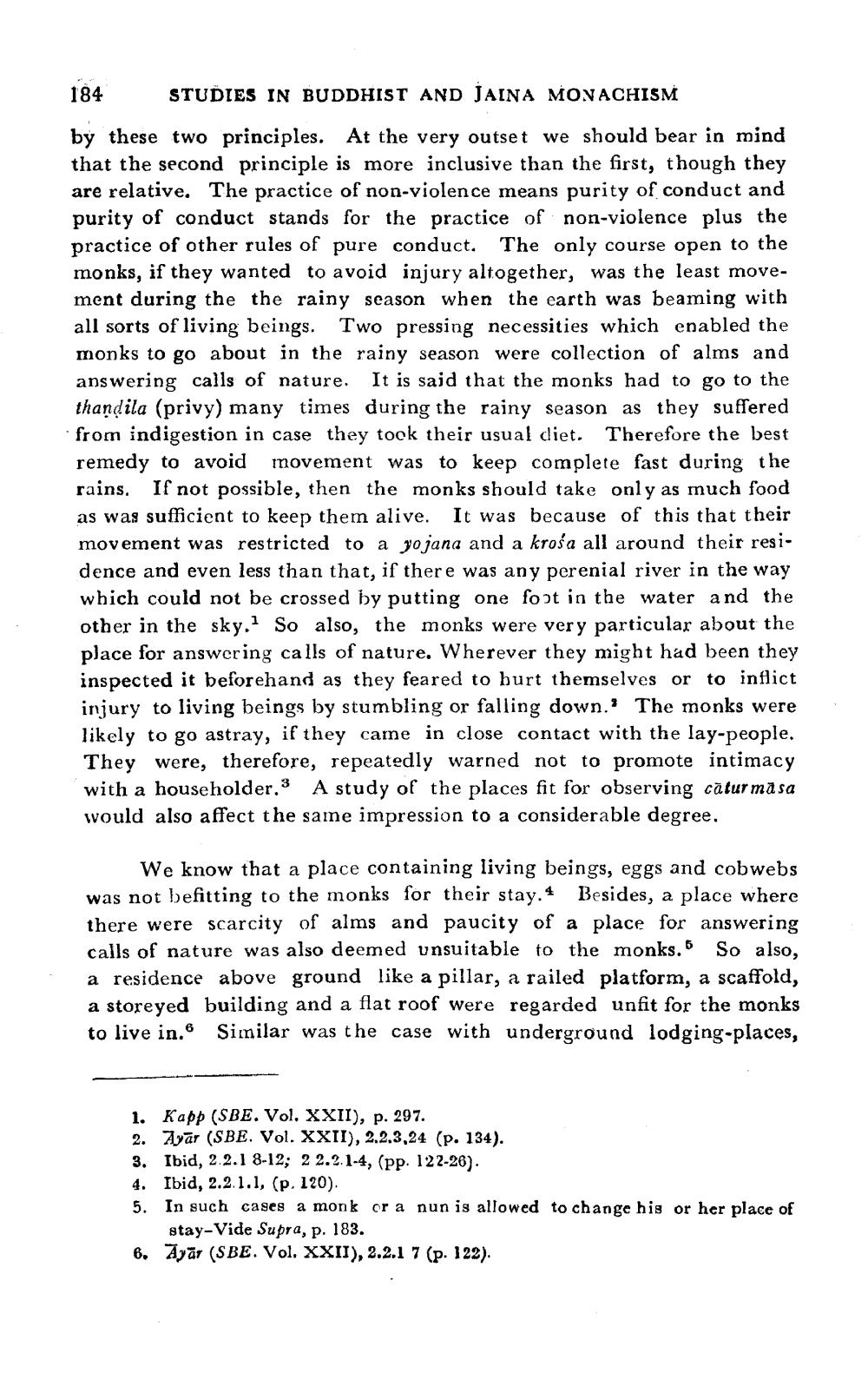________________
184
STUDIES IN BUDDHIST AND JAINA MONACHISM
by these two principles. At the very outset we should bear in mind that the second principle is more inclusive than the first, though they are relative. The practice of non-violence means purity of conduct and purity of conduct stands for the practice of non-violence plus the practice of other rules of pure conduct. The only course open to the monks, if they wanted to avoid injury altogether, was the least movement during the the rainy season when the earth was beaming with all sorts of living beings. Two pressing necessities which enabled the monks to go about in the rainy season were collection of alms and answering calls of nature. It is said that the monks had to go to the thandila (privy) many times during the rainy season as they suffered from indigestion in case they took their usual diet. Therefore the best remedy to avoid movement was to keep complete fast during the rains. If not possible, then the monks should take only as much food as was sufficient to keep them alive. It was because of this that their movement was restricted to a yojana and a krosa all around their residence and even less than that, if there was any perenial river in the way which could not be crossed by putting one foot in the water and the other in the sky. So also, the monks were very particular about the place for answering calls of nature. Wherever they might had been they inspected it beforehand as they feared to hurt themselves or to inflict injury to living beings by stumbling or falling down.' The monks were likely to go astray, if they came in close contact with the lay-people. They were, therefore, repeatedly warned not to promote intimacy with a householder.3 A study of the places fit for observing cãtur masa would also affect the same impression to a considerable degree.
We know that a place containing living beings, eggs and cobwebs was not befitting to the monks for their stay.4 Besides, a place where there were scarcity of alms and paucity of a place for answering calls of nature was also deemed unsuitable to the monks. So also, a residence above ground like a pillar, a railed platform, a scaffold, a storeyed building and a flat roof were regarded unfit for the monks to live in. Similar was the case with underground lodging-places,
1. Kapp (SBE. Vol. XXII), p. 297. 2. Ayar (SBE. Vol. XXII), 2.2.3,24 (p. 134). 3. Ibid, 2.2.1 8-12; 2 2.2.1-4, (pp. 122-26).
Ibid, 2.2.1.1, (p. 120). 5. In such cases a monk or a nun is allowed to change his or her place of
stay-Vide Supra, p. 183. Ayar (SBE. Vol. XXII), 2.2.1 7 (p. 122).




